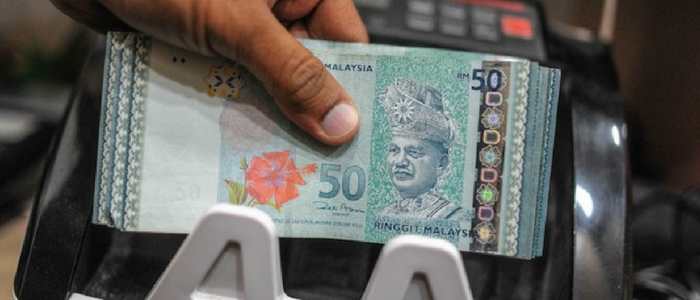KUALA LUMPUR, Sept 27 ― There is a dollar press in Asia, yet it's in no way like the mash of 2013.
Not at all like three years back, the keeping money framework most presented to tight hard-coin subsidizing conditions isn't India. It's Malaysia. Also, that is likely one reason financial specialists are anxious about the country's managing an account stocks:
To see why such second thoughts might be legitimized, consider the straightforward way a bank in Asia can raise transient dollar assets: obtain locally in the interbank market, utilize those assets to purchase greenbacks in the spot business sector and afterward offer them forward by, say, three months.
In the mid year of 2013, after Ben Bernanke initially alluded to decreasing the Federal Reserve's quantitative-facilitating program, the aggregate expense of this operation had shot up to 1.2 for every penny for Indian banks, contrasted and three-month dollar Libor of 0.28 for every penny. Dollar liquidity was all of a sudden so slippery that the national bank gave an appropriation to loan specialists for raising outside cash stores from expat Indians at high financing costs.
That was then. Dollar Libor has since surged to as much as 0.87 for each penny. That is halfway on account of expected fiscal fixing and incompletely in view of a seismic upgrade of the US$2.6 trillion (RM10.75 trillion) currency market industry that kicks in one month from now.
Be that as it may, Indian banks aren't starting to sweat: they can successfully acquire the US money at only 0.39 for every penny, a rebate to Libor.
Not everyone in Asia is so lucky. In the event that there's genuinely a dollar-financing smash for banks in the locale ex Japan, it's in Malaysia, where three-month dollar acquiring is as costly as 1.44 for each penny.
The planning couldn't be more regrettable. A few nations are researching charges of burglary and washing of billions of dollars from 1MDB, a Malaysian state subsidize whose admonitory board was as of not long ago headed by Prime Minister Datuk Seri Najib Razak.
In the mean time, Malaysian banks' store development has slowed down, drove by a 10 for each penny decrease in outside coin stores so far this year. Propels have likewise impeded, however not as much. Credit to-store proportions, thus, are currently in abundance of 87 for every penny.
So while the huge traded on an open market Malaysian banks ― Public Bank, Maybank, CIMB, Hong Leong and RHB ― still procure a respectable 0.9 for every penny return on resources by and large , income development could decrease in the second half and higher financing expenses may crush edges, as indicated by Bloomberg Intelligence investigator Diksha Gera.
Exacerbating matters, after a fierce 19 for each penny slide in 2015, the Malaysian ringgit has risen very nearly 4 for every penny this year, and is the main Asian cash other than the Philippine peso that isn't required to debilitate against the dollar before one year from now's over, accord conjectures appear.
Those desires of steadiness could demonstrate another barrier. The way the hard-money subsidizing shortfall is getting down to business in Malaysia's managing an account framework, it may really be more useful for loan specialists if the ringgit got sufficiently shabby for the nation's non-product fares to rev up, and for dollars to begin pouring back in.
For More Updates : Forex CurrencyTrading Tips | Live Forex Trading Tips | Forex Tips | Currency Trading Tips | Currency Tips | Forex Trading Tips | Forex Signal Services


Thank you so much for sharing this nice post so I appreciate much more from you even if you can then don't hesitate to provide us Daily analysis.
ReplyDelete